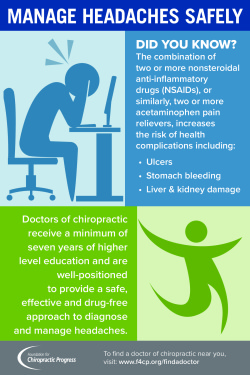Daily Practices That Lead To Pain In The Back And Methods For Prevention
Daily Practices That Lead To Pain In The Back And Methods For Prevention
Blog Article
Team Writer-Vega Glud
Preserving proper stance and avoiding usual risks in everyday activities can significantly impact your back health. From exactly how you sit at your desk to how you lift heavy items, small adjustments can make a large difference. Imagine a day without the nagging pain in the back that impedes your every action; the solution may be easier than you think. By making a couple of tweaks to your day-to-day habits, you could be on your means to a pain-free presence.
Poor Stance and Sedentary Lifestyle
Poor posture and a less active way of life are two significant factors to neck and back pain. When back pain chiropractor slouch or suspicion over while sitting or standing, you put unnecessary strain on your back muscle mass and spinal column. This can result in muscular tissue discrepancies, stress, and at some point, chronic pain in the back. In addition, sitting for long periods without breaks or exercise can damage your back muscle mass and result in rigidity and pain.
To battle inadequate position, make a mindful effort to sit and stand up right with your shoulders back and lined up with your ears. Bear in mind to maintain your feet level on the ground and prevent crossing your legs for extensive periods.
Integrating chiropractor near me open today extending and strengthening exercises into your day-to-day regimen can additionally help boost your pose and relieve back pain associated with an inactive way of living.
Incorrect Training Techniques
Incorrect training strategies can considerably add to neck and back pain and injuries. When you lift heavy things, remember to bend your knees and utilize your legs to lift, rather than counting on your back muscles. Prevent turning your body while lifting and keep the object near your body to reduce stress on your back. It's vital to keep a straight back and prevent rounding your shoulders while lifting to avoid unneeded stress on your spinal column.
Always evaluate the weight of the item prior to lifting it. If it's too heavy, request help or usage tools like a dolly or cart to transport it securely.
Keep in mind to take breaks during lifting tasks to give your back muscle mass a possibility to relax and protect against overexertion. By applying appropriate lifting techniques, you can stop pain in the back and lower the risk of injuries, guaranteeing your back remains healthy and strong for the long-term.
Absence of Normal Exercise and Stretching
A less active way of living without routine workout and extending can dramatically contribute to neck and back pain and pain. When you don't participate in physical activity, your muscle mass end up being weak and inflexible, bring about poor posture and raised stress on your back. Routine workout helps enhance the muscular tissues that support your back, improving stability and lowering the danger of pain in the back. Including extending visit the up coming article into your regimen can additionally improve flexibility, stopping stiffness and discomfort in your back muscles.
To avoid pain in the back triggered by an absence of workout and extending, go for a minimum of 30 minutes of moderate exercise most days of the week. Consist of exercises that target your core muscles, as a solid core can help relieve stress on your back.
Additionally, take breaks to extend and move throughout the day, specifically if you have a workdesk work. Basic stretches like touching your toes or doing shoulder rolls can aid eliminate stress and protect against pain in the back. Prioritizing normal exercise and extending can go a long way in maintaining a healthy back and reducing pain.
Verdict
So, remember to stay up straight, lift with your legs, and stay active to stop back pain. By making straightforward adjustments to your day-to-day routines, you can stay clear of the pain and constraints that come with neck and back pain. Look after your spinal column and muscle mass by practicing great stance, proper lifting techniques, and routine exercise. Your back will certainly thanks for it!
